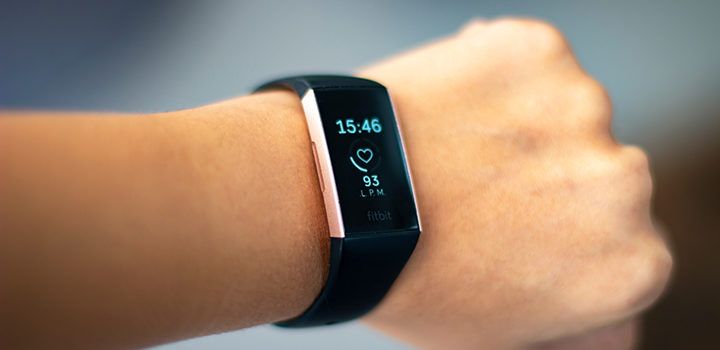

Becoming Bionic and the Rise of Digital Health Solutions
by Santosh Kesari
Technology apps give you power in cancer care

In a terrible accident, astronaut Steve Austin was severely injured and rushed to a top-secret high-tech facility. In a government-sanctioned surgery, scientists and doctors worked around the clock using experimental technology to install a bionic arm, eye, and two bionic legs, giving him a new lease of life that made him “The Six Million Dollar Man”.
That was the outrageous premise of the 1973 TV show, but 48 years later, in 2021, these concepts don’t seem so strange. Medicine and technology have become integrated partners improving health and quality of life in many areas. Hips and knees, heart valves, cochlear implants, and eye lenses are just a few parts of the body that can be restored using artificial components. In the near future, scientists and engineers anticipate being able to 3D print joints directly into a patient’s body. And of course, technology is ever-present in advanced medical instrumentation, testing, and much more.
Technology use in cancer

In the treatment of brain cancer, certainly, there have been advances in minimally invasive surgical techniques using endoscopes, 3D visualization, Optune tumor-treating fields and stereotactic GPS-like mapping software to clearly distinguish a tumor from normal tissue and remove it without disturbing surrounding brain structures.
However, now we are beginning to see the effects of a greater technology revolution. Surgery, chemotherapy, radiation therapy, and now computational advances in Big Data analytics are set to push precision therapeutic approaches further forward. These advances aim to test and target specific cancer types on the molecular level leading to less toxic yet more durable treatments personalized for individual patients.
Technologically speaking, what is exciting now, is that we are seeing the rise of a new generation of digital health solutions in the form of AppomicsTM (data captured through apps and wearables). These help patients track their health condition and further provide insights into associated components of clinical, mental and social burdens. Such technologies are increasingly being incorporated into disease monitoring and management and are being linked to various patient-centric technologies.
Mobile apps and the new digital era for patients
The use of mobile devices is universal and a significant portion of time that people spend on their phones is on some kind of social media. Apps that take advantage of this trend have the potential to help patients keep track of various health indicators and statistics, which they can selectively share with their family, caregivers, well-wishers and importantly, their doctors.

This ability to track and share data is one of the key drivers for patient utilization. Apps such as CancerLife, and LivingWith automatically collect important patient data and allow the patient to easily post a single update that goes to listed family and friends. The affordability of wearables such as FitBits, iWatch and recently Halo that can be used to continuously monitor the body’s status, makes it easier for patients to document what they are going through. Self-Care Catalysts’ web- and mobile-based app helps patients share relevant medical data and interact with peers on the app’s social network for support.
In addition to disease management, apps have the power to help healthy individuals to make healthy lifestyle choices. An opportunity to reduce the incidence of diseases and chronic conditions is now possible with the intimate knowledge of an individual’s lifestyle. The temporal dynamics captured and combined with the existing knowledge of the individual’s health conditions has a potential to open new avenues in understanding disease manifestation and evolution. The big data generated and quantified by AppomicsTM, when combined with Artificial Intelligence paves the way for this new digital health era.
Data to support cancer care
The key enablers that can make a significant contribution are data centricity – an ecosystem where data sharing is transparent, and consumer centricity – solutions tailored to address consumer challenges and incentivize them.
“Enlisting the support of consumers – both patients and healthy individuals, is the key to redefining the next generation digital health ecosystem,” says Dr. Shashaanka Ashili, a Bio-Optical Physicist and Founder of Smart Drivinc, a company focused on providing next generation connected solutions. The advent of 5G coupled with affordable IoT solutions will redefine the doctor-patient-insurance relationship, which in turn reduces the burden on healthcare infrastructure.
So, while we keep figuring out more effective ways to cure cancer, digital health solutions can support that cancer care. Data that is collected can be used to understand the burden of disease and treatment, which in turn has a direct impact on medical care, side-effect mitigation, and the quality of survivorship both for the patient and their families.
About the Author

Santosh Kesari
Santosh Kesari, MD, PhD, is Director of Neuro-oncology at Pacific Neuroscience Institute and Chair and Professor, Department of Translational Neurosciences and Neurotherapeutics, Saint John’s Cancer Institute at Providence Saint John’s Health Center. He is a world leader in the innovative treatment of all types of malignant brain tumors. Dr. Kesari and his team conduct leading-edge clinical trials in immunotherapy and biomarker-based brain tumor therapies.
Last updated: February 23rd, 2021